When we hear that a hard drive is “dead,” it often conjures images of irrevocably lost data. However, this grim diagnosis is not always as final as it may seem. While some scenarios may indeed spell the end for your device, many situations allow you to get your files back from a dead hard drive—you just need to use the right recovery method. This article explains when a dead hard drive can and can’t be recovered, and it provides a detailed, step-by-step guide for you to follow.
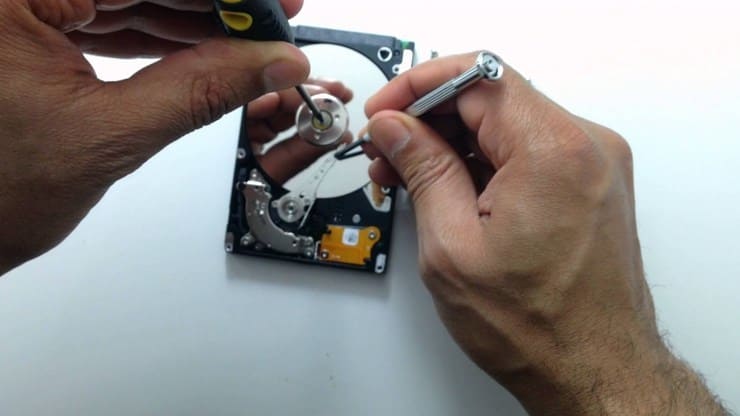
How a Hard Drive Becomes Dead or Damaged
Unlike solid-state drives that use memory cells, hard drives use rotating magnetic platters to store your data. A head moves across the platters to locate where data is stored so it can be read by your system. Suffice to say, there are a lot of moving parts.
Here are a few reasons why a hard drive can become dead or damaged:
- Physical damage – Given that hard drives are made of moving parts, physical damage can easily render your hard drive unusable if one of the platters inside becomes misaligned or scratched.
- Data corruption – Corruption is a form of logical damage. Corruption can occur to individual files, as well as the entire file system. If a file system becomes corrupted, your hard drive won’t know how to access your data, rendering it unreadable.
- Malware attack – Malware, like viruses, comes in many forms, and they can also cause various other forms of logical damage. In some cases, it can attack your files or format your entire drive. One such example is the Annabelle ransomware virus, which is capable of encrypting your files and locking your PC.
Is it Possible to Recover Data from a Dead Hard Drive?
Note: We focus exclusively on traditional spinning hard disk drives (HDDs) and not modern solid-state drives (SSDs).
Logical Damage Recovery
Yes, its possible to recover data from hard drives that have suffered logical damage, such as data corruption or the effects of a malware attack. That’s because the data (at least some of it) is still present on the drive, and it just needs to be retrieved using the right technique, which we describe in the next section of this article.
Physical Damage Recovery
For physically damaged hard drives, where components like the magnetic platters are misaligned or scratched, recovery at home is nearly impossible. These types of damage require a cleanroom environment to prevent further damage during the recovery process, so it’s best to consult professional data recovery services, which have the necessary tools and environment to attempt a safe recovery.
The only physically damaged hard drives that can be successfully recovered at home are those with superficial damage that does not affect the internal components critical for data storage and retrieval. Examples of superficial damage include issues with the hard drive’s external casing. As long as such drives can communicate with a computer, data recovery can be attempted.
How to Recover Deleted Files from Dead Hard Drive
Before looking at ways to recover data from your dead or damaged hard drive, it’s essential to undertake a couple of foundational steps to set the stage for a successful recovery process.
Step 1. Assess the Damage

Before attempting any form of recovery, you need to determine whether the drive has suffered physical or logical damage. Here are common signs of physical damage:
- Unusual noises, such as clicking, grinding, or whirring sounds.
- Burning smell.
- No sound at all coming from the hard drive.
If your drive exhibits any of these symptoms, and the damage seems beyond cosmetic issues that still allow the drive to communicate with the operating system, professional data recovery services are likely your best option.
However, if the damage is superficial and the drive can still interact with a computer, or if the drive’s issues are primarily logical (e.g., corrupted data, formatted drive, malware infection), then you can proceed to the next step.
Step 2. Create a Byte-to-Byte Backup
While a dead hard drive that has suffered light physical damage or any form of logical damage isn’t really dead in the truest sense, you still need to proceed carefully because you don’t want to make the data loss situation worse.
That’s why you should always create a byte-to-byte backup and then recover data from it instead of the damaged disk. A byte-to-byte backup is a complete, exact copy of every bit of data on a disk, from its file system structure to individual files and metadata. Unlike standard backups that may only target visible files, a byte-to-byte backup captures everything on the disk, including hidden or system files, and even sectors that might have been flagged as bad.
A byte-to-byte backup that includes the entire contents of your disk allows you to:
- Reduce the need for repeated access to the damaged disk, thereby preserving its current state and preventing additional damage.
- Employ various recovery techniques in a controlled environment.
- Verify and validate the data before recovery.
To create a byte-to-byte backup of your dead hard disk, we recommend you use a hard data recovery software called Disk Drill, whose image backup feature is completely free and easy to use:
- Download and install Disk Drill on a working storage device. Make sure the computer on which you install Disk Drill has enough free storage space to accommodate the backup of your dead hard drive.

- Launch Disk Drill, and from the Extra Tools menu, select Drive Backup.

- Choose the dead hard drive you wish to back up from the list of available drives.
- Click Byte-to-byte Backup and select a destination for the backup file. Ideally, the destination should have about 5-10% more free storage space than the total size of the dead hard drive.

- Start the backup process. Disk Drill will display the progress, and you can pause and resume the backup as needed.
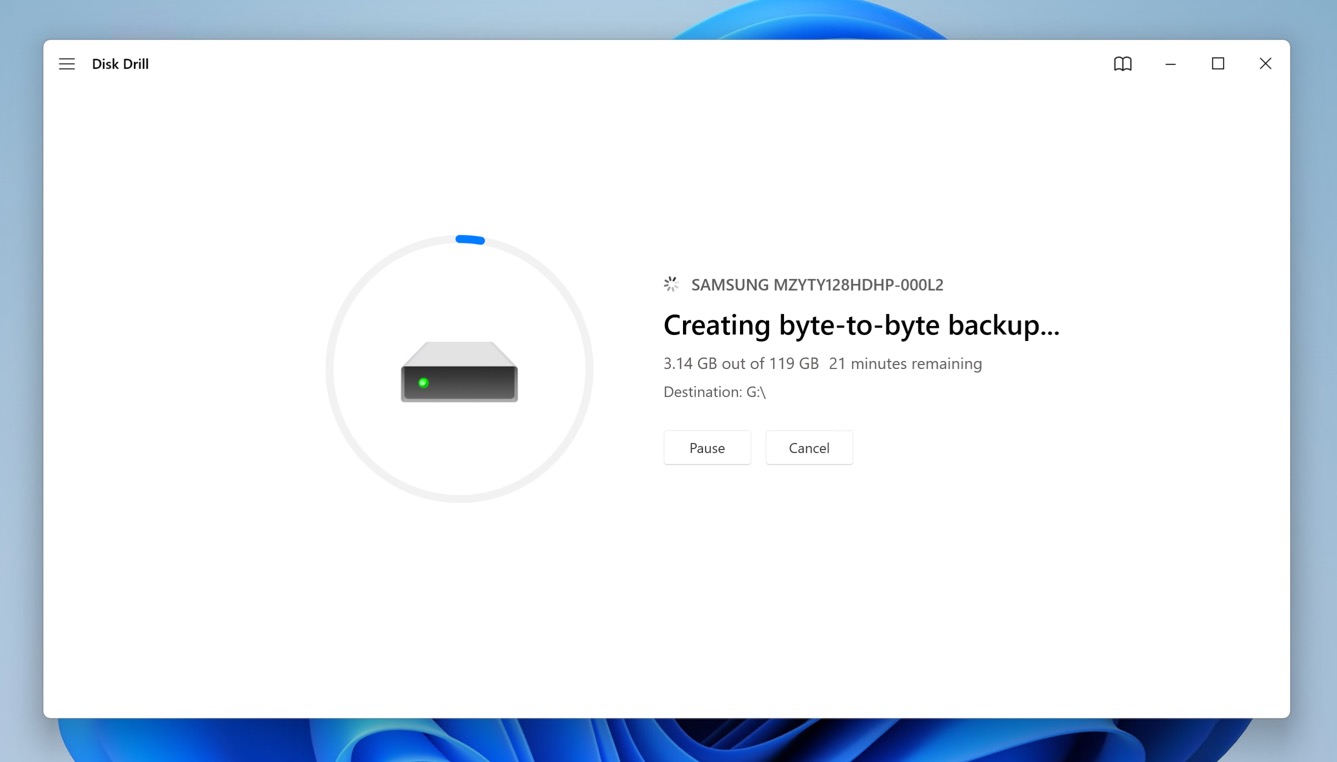
Note: If the drive disconnects during the backup process, Disk Drill will attempt to resume automatically upon reconnection. Frequent disconnects may indicate the drive is in worse condition than initially thought, and professional advice may be required.
Step 3. Recover Files from Dead Hard Drive Using Recovery Software
Once you have created a byte-to-byte backup of your dead or damaged hard drive, you can proceed with the recovery process without further risking the original drive’s integrity. How? With the same software that enabled the backup: Disk Drill.
To recover deleted data from a damaged hard drive:
- Disconnect or eject the original hard drive from your system to avoid any accidental writes or further damage.
- Navigate to the Data Recovery section in Disk Drill, select the Storage devices category, and click Attach disk image to load your byte-to-byte backup file.
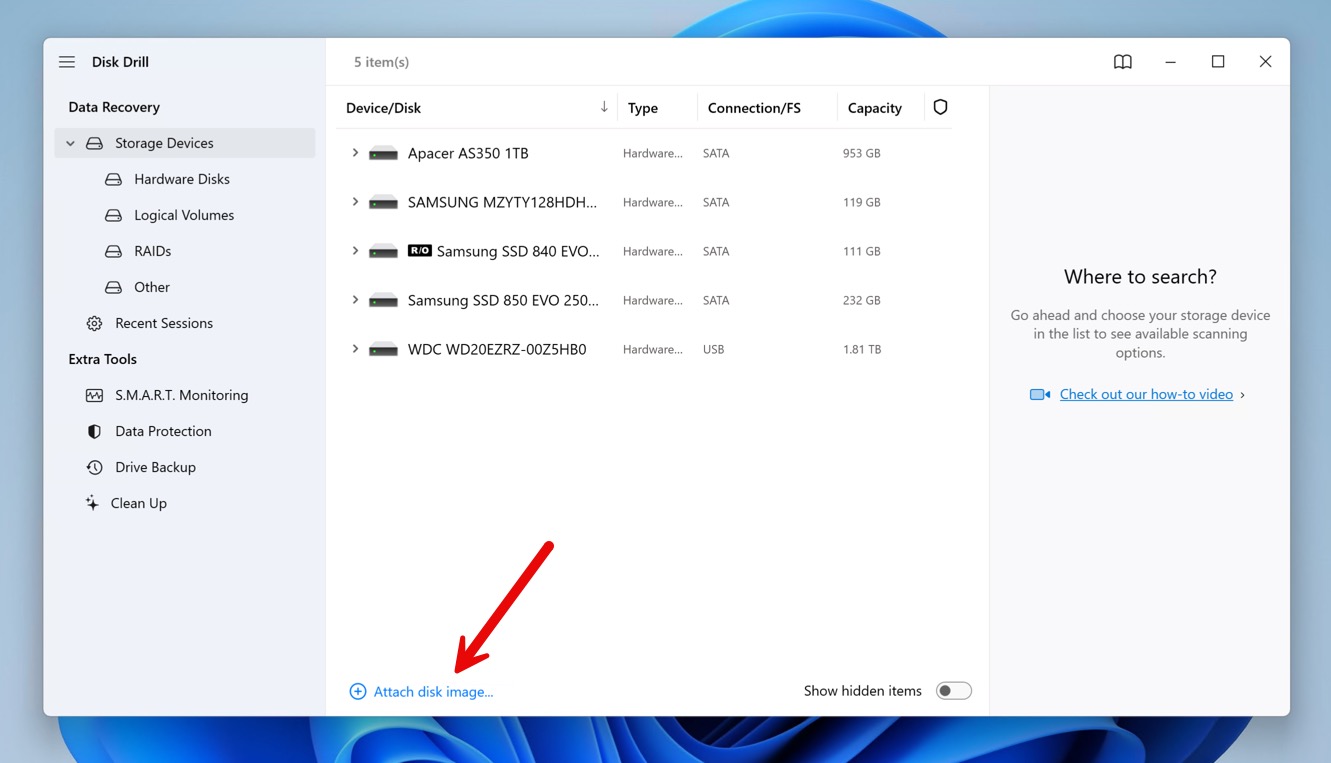
- Choose your backup file from the list and click Search for lost data to start the scanning process.

- Select the files you wish to recover. Disk Drill allows you to preview files before recovery to verify their integrity. You can also narrow down the recoverable files using search filters in the left pane.

- Click the Recover button to complete the recovery process. You will be asked to choose a destination for your files (select a different from the source drive to avoid overwriting data).
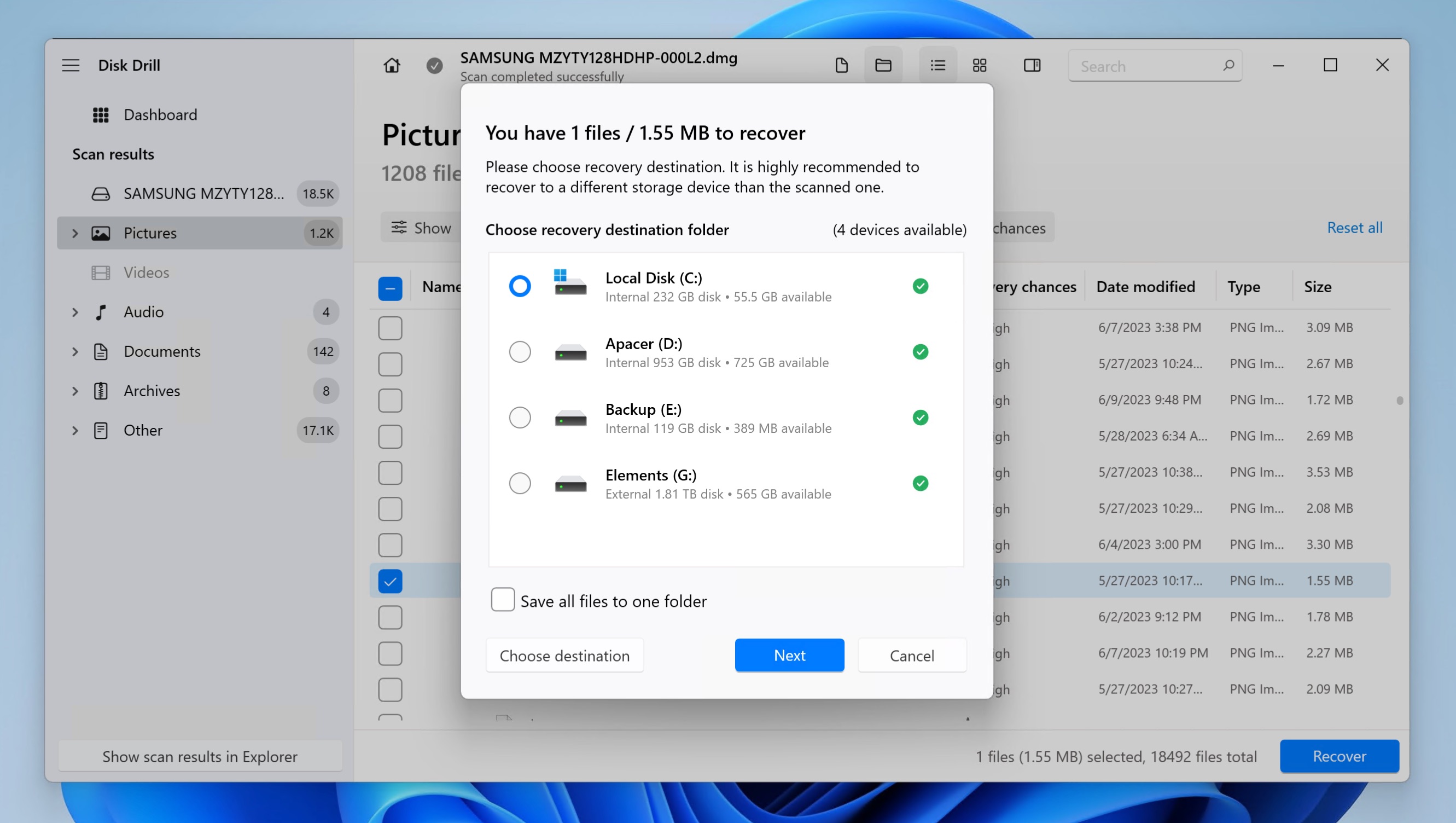
Following these steps with Disk Drill maximizes your chances of recovering valuable data from a damaged hard drive.
Other Methods to Recover Deleted Files from Dead Hard Drive
While data recovery software is the most effective and reliable method to recover deleted files from a dead hard drive that has suffered cosmetic physical damage or any kind of logical damage, alternative methods do exist. Such methods can complement software solutions or serve as viable options when software alone doesn’t suffice.
Method 1: Check the Recycle Bin
The first place you should check is the Recycle Bin. When a file is deleted, it will be sent to the Recycle Bin instead of being permanently deleted immediately. The only time this isn’t true is if the Recycle Bin is full or the file is too large to be sent there. Therefore, before you move on to the next methods, check your Recycle Bin by following the steps below:
- Open Recycle Bin from your Desktop.

- Right-click your file and select Restore. If recovering multiple files, hold CTRL and click each file before right-clicking.

When you click restore, it will restore your files back to their original locations. Alternatively, you can drag the files from the Recycle Bin to a location of your choice. If your files can’t be retrieved from the Recycle Bin, try the next method.
Method 2: Restore From a Backup
Restoring from a backup is the easiest way to retrieve your data. Of course, it’s only possible if you have a backup to recover the data from. Windows equips you with the backup utilities to back up your data from the start, but they need to be configured first. One such tool is File History, which takes snapshots of your files and allows you to restore a working version of them.
If you have File History enabled, follow these steps to restore a copy of your files.
- Launch the Start menu and enter “file history.” Select the File History (Control Panel search result.

- Click the Restore personal files option in the File History Control Panel window.

- Navigate to the location where your files were stored, and use the navigational arrows to go to a point in time where the files were in the folder. Select what files you want to restore, then click the green restore button. Once restored, you will find the files back in the folder.

How to Repair a Corrupted, Damaged, or Dead Hard Drive
While some forms of damage can put your hard drive in a state that’s beyond repair, some corrupted, damaged, or dead hard drives can actually be restored. Once you’ve recovered your data from the drive, try some of the below solutions to see if the drive can be fixed.
Method 1: Repair Using CheckDisk
CheckDisk is a file system repair utility that can be used to repair logical errors on your drive. Using parameters, you can instruct CheckDisk to scan your drive for errors and automatically fix them. This includes the ability to locate bad sectors and mark them as unavailable space so no data is saved there accidentally.
Follow these steps to repair a drive’s file system using CheckDisk.
- Right-click Start and select Windows PowerShell (Admin) in Windows 10 or Terminal (Admin) in Windows 11. Click Yes if prompted by UAC.
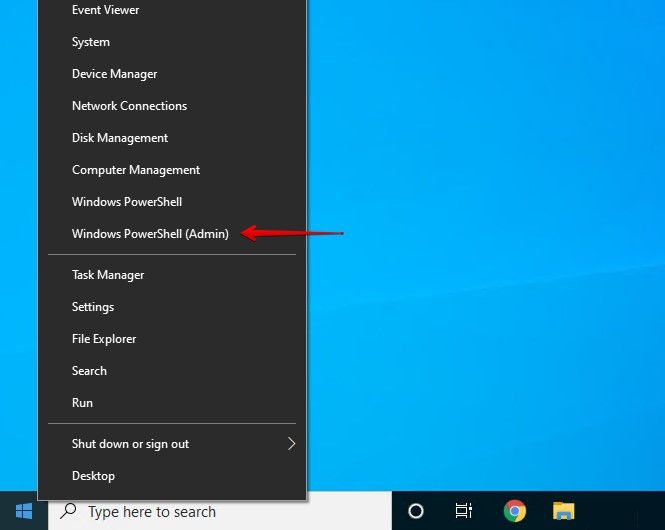
- Type chkdsk /f /r D:. Replace D: with the letter of your own drive. Press Enter.

After running the command, it won’t take long to complete (longer drives may experience longer wait times). See if the damage is repaired once the process is finished.
Method 2: Fix Damaged Windows Files
If any of your Windows files have become corrupted or missing, it could prevent your system from running correctly. In such cases, you can use the System File Checker (SFC) utility. Like CheckDisk, the SFC utility is another tool included in Windows. But, instead of fixing file system-related issues, it can scan for missing or damaged Windows system files and restore them.
Use these instructions to restore damaged or missing Windows files using SFC:
- Right-click Start and select Windows PowerShell (Admin) n Windows 10 or Terminal (Admin) in Windows 11.

- Type DISM.exe /online /cleanup-image /restorehealth and press Enter. It will take a few minutes. This command uses Windows Update to pull the files that are used to fix corruptions.

- Type sfc /scannow and press Enter. This command will scan all system files and replace any corrupted ones with working versions.
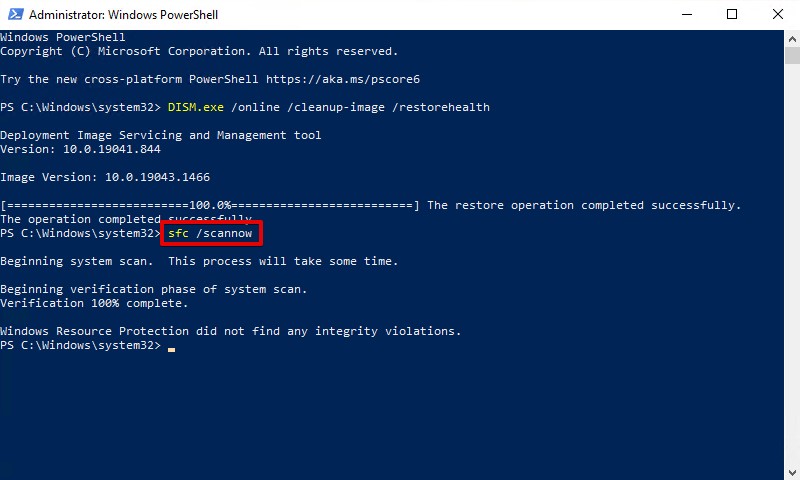
Method 3: Scan for Viruses
As we mentioned earlier, viruses can be the culprit behind the damage your drive has sustained. Scanning your drive for viruses may be the solution to restoring it to working order. If you don’t have an antivirus program installed, you can make use of Windows Security.
Follow these instructions to scan your drive for viruses using Windows Security.
- Press Windows Key + S and search Windows Security. Open it.
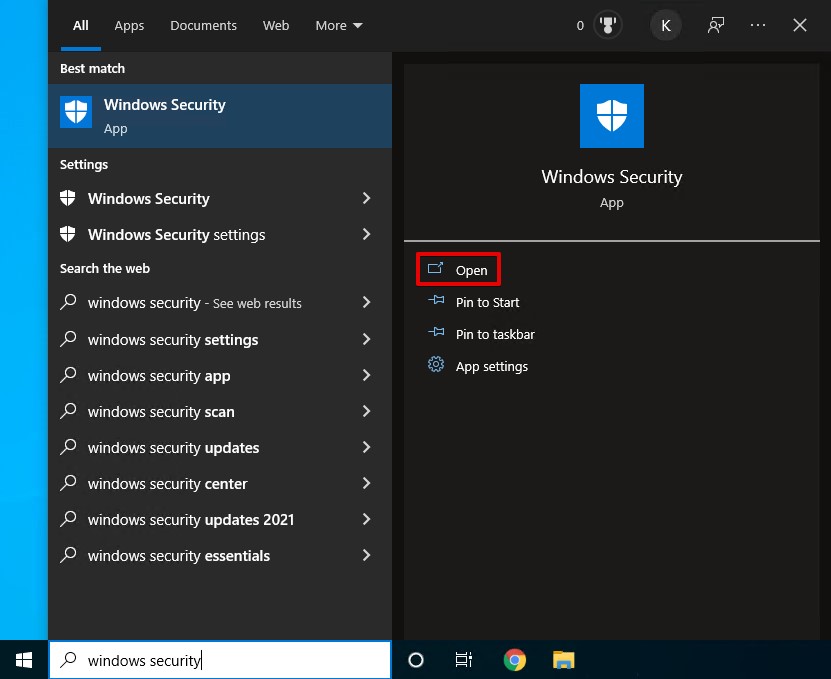
- Click Virus & threat protection.
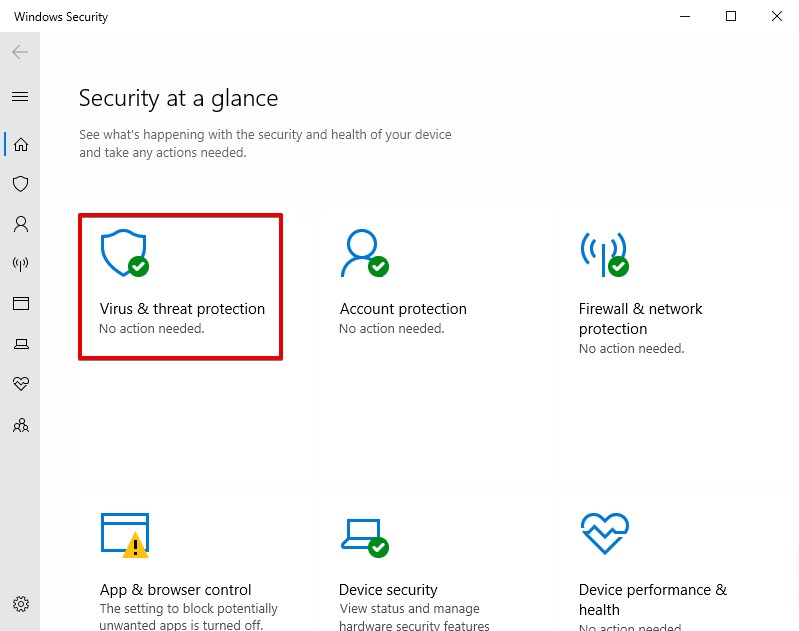
- Click Scan options.

- Choose your scan type. A Full scan is the most effective. When ready, click Scan now.

Conclusion
If your hard drive seems dead, don’t lose hope. The term “dead” can often be misleading, as many situations that appear dire can still be resolved with the correct recovery techniques. Logical issues, for instance, can frequently be remedied with the right software and a bit of know-how, and the same goes for cosmetic physical damage.
But if your drive has sustained physical damage and all methods in this article have failed, you can always consider reaching out to a data recovery center to have a professional see what further options are available.
FAQ
First, you need to determine if the hard drive is recognized at all. If you can see it in BIOS, it usually means that the hard drive is recognized, and you can use a utility like TestDisk to scan it and rebuild the master boot record (MBR) or fix any other issues that make it impossible to boot from the drive.
That depends on what you mean by dead. If you mean a hard drive that has suffered physical damage, then we have bad news for you: you most likely won’t be able to recover any data from it at home. But if you mean a corrupted or formatted hard drive, then you can use data recovery software to get back your data.
If your operating system can’t detect your hard drive, you won’t be able to use any data recovery software application to recover your data. Sometimes, all you need to do to fix this problem is connect your hard disk to a different port or computer. If that doesn’t help, we recommend you contact data recovery professionals.
Absolutely! In many cases, moving an old hard drive to a new computer is a simple matter of disconnecting it from one machine and connecting it to the new one. You may, however, need to use an adapter if the interfaces aren’t compatible, which is the case when connecting an IDE hard drive to a SATA-only motherboard.
Common signs of HDD failure include strange noises like clicking or whining, overheating, data transfer errors, performance issues, boot problems, random crashes, and missing files and folders. Many of these issues occur only when the situation is really bad, which is why it’s important to keep an eye on your HDD’s S.M.A.R.T. parameters with a tool like Disk Drill, which includes a S.M.A.R.T. monitoring feature free of charge.
Follow next steps to recover your files from a dead hard drive:
- Attach the non-functional hard drive to a working computer.
- Make sure the system recognizes the drive.
- Install Disk Drill on the computer.
- Create a byte-to-byte backup image of the dead hard drive.
- Scan the backup image using Disk Drill.
- Review the discovered files for recovery.
- Select the desired files and recover them to a secure location.



